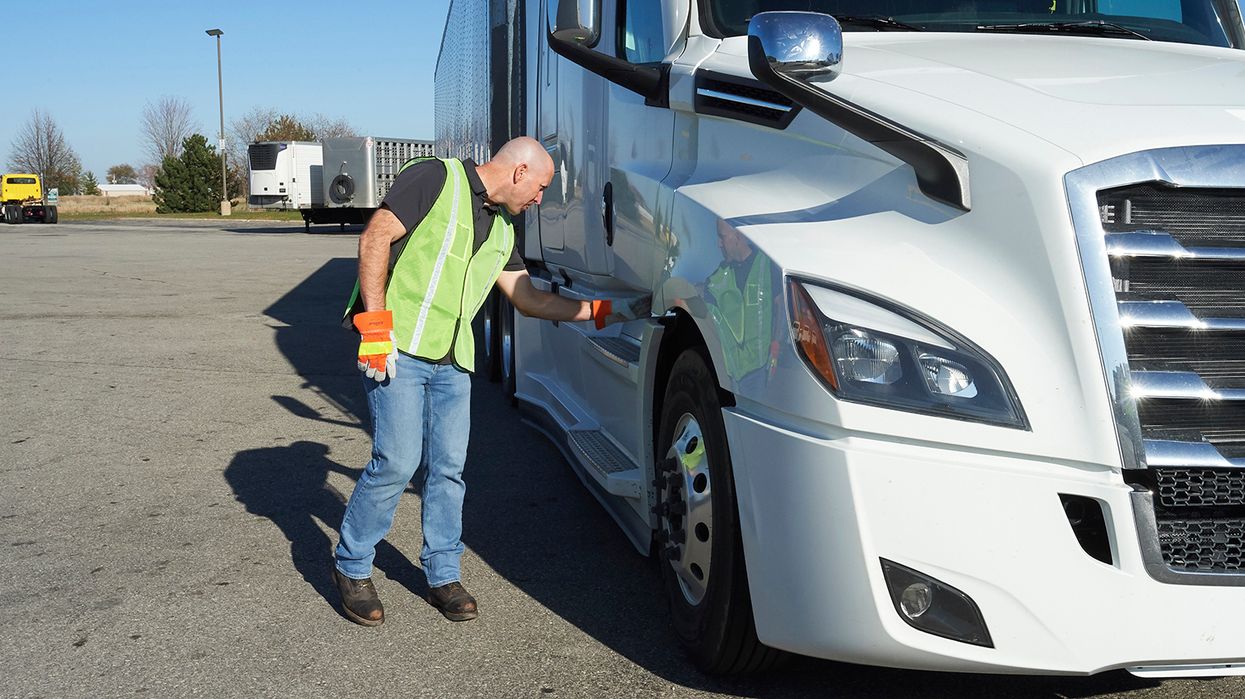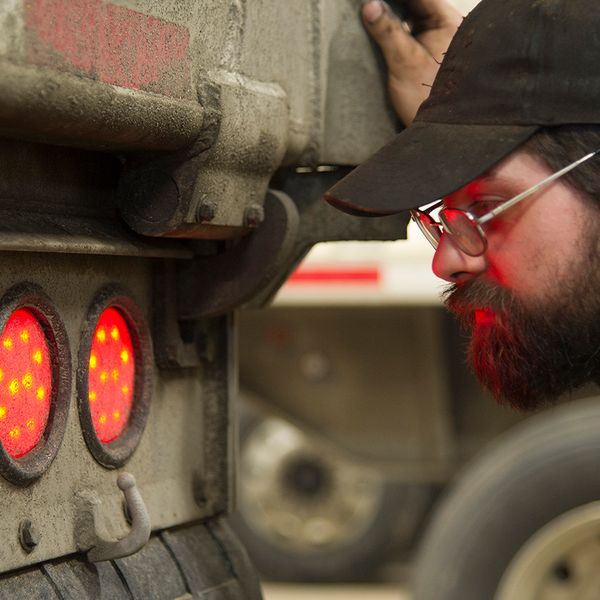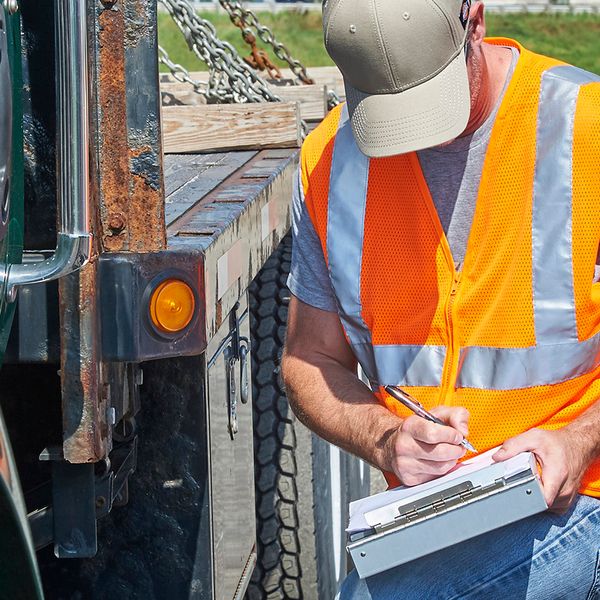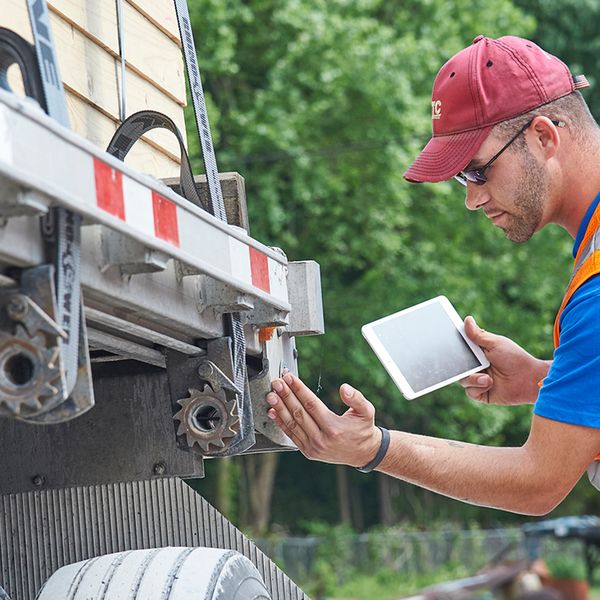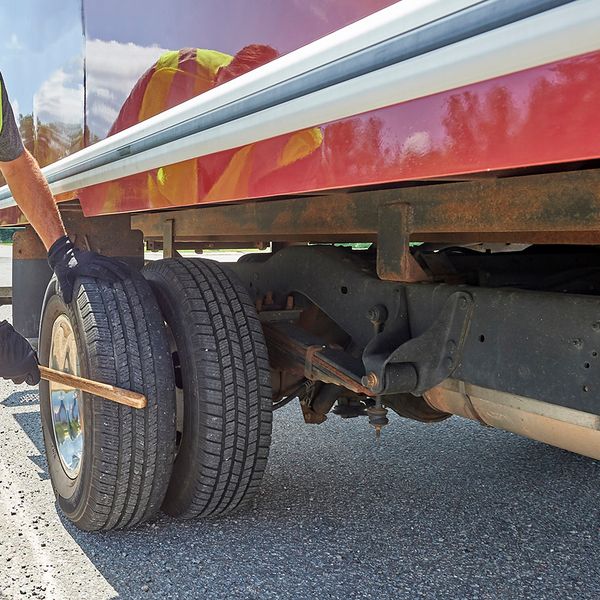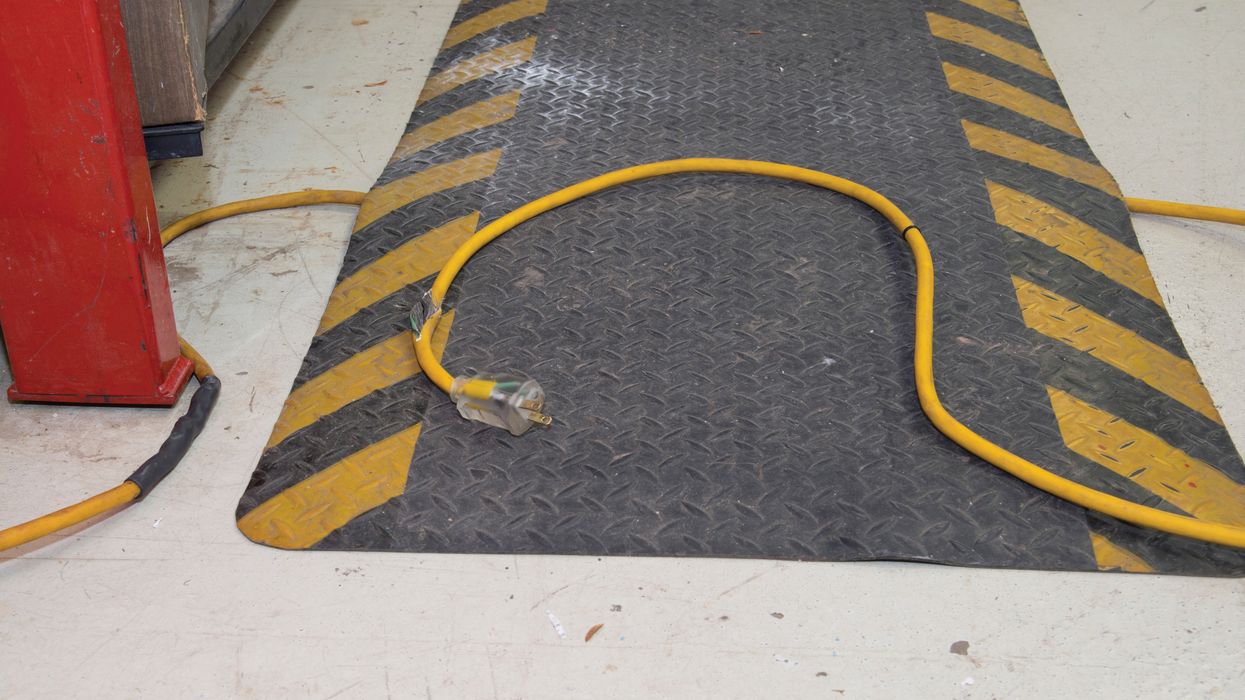On-the-road safety starts off the road: Driver vehicle inspections
Pre- and post-trip inspections are critical steps for truck drivers, designed to ensure the safety and reliability of their vehicles before hitting the road and after completing a haul. These inspections, required by federal regulations, cover everything from brakes and tires to lights and fluid levels.
There is a lot of confusion about when a driver must do an inspection, and what inspection documentation is required. Let’s dive into the details for more clarity.
Inspection requirements
At specific points throughout the workday, a driver is required to do a vehicle inspection, as follows:
- Pretrip: Before operating a vehicle, the driver must be satisfied it is in safe operating condition. If the vehicle has any defects, the driver is not to operate it until the defects are corrected (392.7).
- En-route: The driver must stop and inspect the securement of the cargo within the first 50 miles of loading, and then every three hours, 150 miles, or at the next duty change, whichever comes first (392.9). A driver transporting placarded hazardous materials must inspect the tires at the beginning of the trip, every time the vehicle is parked, and at the end of the trip (397.17).
- Post-trip: At the end of the day, the driver must report any defects on the vehicle. To determine if there are any defects on the vehicle, the driver must inspect it (396.11).
Documentation requirements
Following the inspection, the driver must submit paperwork only in specific situations, including:
- Pretrip: No pretrip form is required. If the driver discovers a defect, the driver must ensure the defect is repaired. The only required record will be the maintenance record generated for the repair (see 396.3). However, if there is an outstanding driver vehicle inspection report (DVIR) from a previous driver, the driver doing the pretrip must sign and submit it.
- En-route: No documentation is required.
- Post-trip: If the driver discovers a defect during a post-trip inspection or knows of an unrepaired defect on the vehicle, the driver must submit a DVIR detailing the defect. Before the vehicle can be operated again, a carrier official must sign the DVIR saying the repair was completed or not necessary. A carrier official can be a mechanic, maintenance supervisor, or the driver in cases where the driver does or oversees the repairs. The next driver to pretrip the vehicle must sign the DVIR, agreeing with the carrier official.
Common carrier practices
Confusion about how and when to document an inspection often arises from the fact that many carriers have their own documentation practices. Here are some of the common practices used by carriers, and the reasons for them:
- Pretrip: Most carriers have their drivers complete a pretrip form to make sure the driver is doing the inspection and to document the condition of the vehicle. Some pretrip forms will resemble a DVIR.
- En-route: Some carriers require their drivers to note on their log (paper or electronic) when an en-route inspection is completed to prove the inspection was done.
- Post-trip: Some carriers require their drivers to submit a DVIR at the end of the day for each vehicle used, even if there are no defects.
By reviewing the requirements and best practices with your drivers and maintenance teams, your drivers and equipment will be better prepared for long trips out on the road.
Key to remember: Ensure that your drivers understand when an inspection is required, when it must be documented, and what is required under your company policy.

